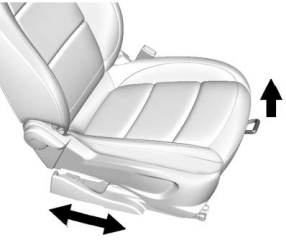Buick Encore: Driving Information / Braking
Braking action involves perception time and reaction time. Deciding to push the brake pedal is perception time. Actually doing it is reaction time.
Average driver reaction time is about three-quarters of a second. In that time, a vehicle moving at 100 km/h (60 mph) travels 20 m (66 ft), which could be a lot of distance in an emergency.
Helpful braking tips to keep in mind include:
- Keep enough distance between you and the vehicle in front of you.
- Avoid needless heavy braking.
- Keep pace with traffic.
If the engine ever stops while the vehicle is being driven, brake normally but do not pump the brakes. Doing so could make the pedal harder to push down. If the engine stops, there will be some power brake assist but it will be used when the brake is applied. Once the power assist is used up, it can take longer to stop and the brake pedal will be harder to push.
 Defensive Driving
Defensive Driving
Defensive driving means “always expect the
unexpected.” The first step in driving
defensively is to wear the seat belt. See
Seat Belts.
Assume that other road users
(pedestrians, bicyclists, and other drivers)
are going to be careless and make
mistakes...
 Steering
Steering
Caution
To avoid damage to the steering system,
do not drive over curbs, parking barriers,
or similar objects at speeds greater than
3 km/h (1 mph)...
Other information:
Buick Encore 2020-2025 Owner's Manual: Distracted Driving
Distraction comes in many forms and can take your focus from the task of driving. Exercise good judgment and do not let other activities divert your attention away from the road. Many local governments have enacted laws regarding driver distraction...
Buick Encore 2020-2025 Owner's Manual: Windshield Wiper/Washer
The windshield wiper/washer lever is on the right side of the steering column. Move the lever to one of the following positions: HI : Use for fast wipes. LO : Use for slow wipes. INT : Use this setting for intermittent wipes or Rainsense™, if equipped...
Categories
- Manuals Home
- Buick Encore Owners Manual
- Buick Encore Service Manual
- Digital Speedometer
- Lower Anchor and Top Tether Anchor Locations
- Tire Changing
- New on site
- Most important about car
Seat Adjustment
Warning
You can lose control of the vehicle if you try to adjust a driver seat while the vehicle is moving. Adjust the driver seat only when the vehicle is not moving.

